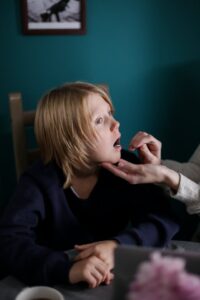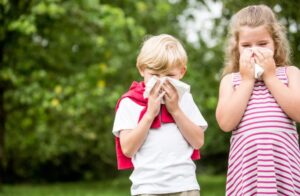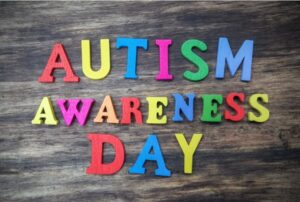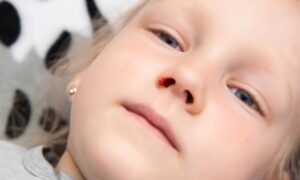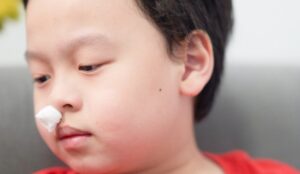What Is Pneumonia in Children?
Pneumonia is a common respiratory illness that poses a significant risk to children, especially during fall and winter. Recognizing its symptoms early is crucial for timely intervention. Pneumonia is typically caused by bacterial or viral infections, and in severe cases, it can be life-threatening.
Early Signs: How to Identify Pneumonia in Children
Parents should be alert to these early signs of pneumonia:
- Persistent and Worsening Cough
A wet cough indicates mucus buildup, while a dry cough may reflect airway irritation. If the cough lasts more than three days, seek medical attention. - Difficulty Breathing or Wheezing
Look for rapid breathing or noticeable chest retractions. These are classic indicators of pneumonia. - Recurring Fever or Persistent High Fever
A temperature exceeding 102°F (39°C) that doesn’t subside, especially with fatigue or lethargy, requires immediate medical evaluation. - Pale Skin or Bluish Lips
These signs of oxygen deprivation are urgent and need prompt action.
Common Causes of Pneumonia in Children
- Viral Infections
Viruses such as influenza or respiratory syncytial virus (RSV) often cause milder symptoms but can lead to secondary infections. - Bacterial Infections
Streptococcus pneumoniae is a common culprit, often causing severe symptoms that necessitate antibiotics. - Environmental Factors
Exposure to air pollution and secondhand smoke increases the risk of pneumonia. - Weakened Immune System
Children with compromised immunity are more vulnerable to infections.
What Parents Can Do
- Seek Medical Help Promptly
If early signs appear, consult a doctor without delay to avoid complications. - Provide Proper Care
Ensure children stay hydrated and consume nutritious, easily digestible food. Avoid self-medicating with antibiotics; always follow medical advice. - Maintain a Clean Environment
Keep indoor air well-ventilated and free of irritants that could aggravate respiratory issues.
Effective Ways to Prevent Pneumonia in Children
- Vaccination
Vaccines for pneumococcal disease and influenza are essential to prevent pneumonia. - Boost Immunity
Encourage a balanced diet, regular exercise, and sufficient sleep to strengthen the immune system. - Promote Hygiene
Teach children to wash their hands frequently and avoid close contact with sick individuals or crowded areas.
FAQs: Common Questions from Parents
1. What’s the difference between pneumonia and a cold?
Pneumonia involves more severe symptoms such as high fever and difficulty breathing, whereas colds usually involve mild symptoms like a runny nose and sneezing.
2. Can low-grade fever indicate pneumonia?
Yes, some pneumonia cases manifest with low or no fever but are accompanied by other signs like coughing or unusual fatigue.
3. Is a chest X-ray necessary for diagnosis?
Doctors may recommend a chest X-ray to confirm the extent of infection in severe or unclear cases.
4. Is pneumonia likely to recur?
Children with weak immunity or exposure to polluted environments may experience recurrent pneumonia.
Avoiding Common Missteps in Pneumonia Care
- Ignoring Persistent Coughs
Different types of coughs signal varying causes. Pay attention to the duration and characteristics of the cough. - Overusing Fever-Reducing Medication
Unless the fever is excessively high or causing significant discomfort, avoid early use of medication, as fever is a natural immune response. - Skipping Follow-Ups
Regular check-ups during recovery are vital to ensure no lingering infection or recurrence.
Key Takeaways
Early signs of pneumonia in children, such as persistent cough, fever, and breathing difficulties, should not be ignored. Through prompt medical care and proper home management, parents can effectively control the condition. Prevention is key, with vaccines, a strong immune system, and a healthy environment being critical safeguards for children’s well-being.
References
- Centers for Disease Control and Prevention (CDC). Pneumonia in Children: Symptoms and Treatment.
- Mayo Clinic. Pneumonia in Children: Causes and Prevention.
- World Health Organization (WHO). Childhood Pneumonia: Risk Factors and Prevention.
- National Health Service (NHS). Recognizing and Treating Pneumonia in Kids.
- American Academy of Pediatrics (AAP). Pediatric Respiratory Illness Guidelines.
- PubMed Central. Studies on Pediatric Pneumonia Risk Factors.






